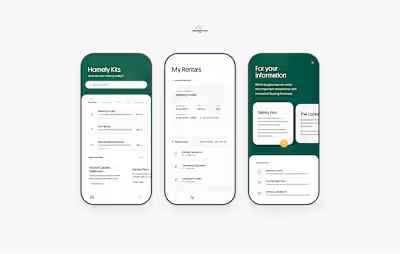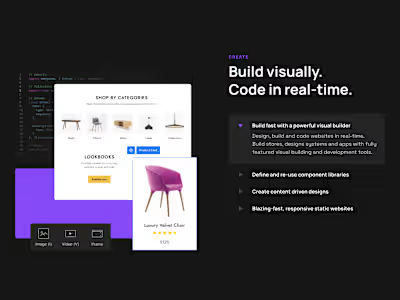UX Research Case Study: User Persona for a Productivity App
My design process involves a deep dive into understanding the needs, goals, and preferences of the target audience. By empathising with users and aligning their requirements with business objectives, I strive to create intuitive and meaningful experiences that resonate with users on a deeper level.
Let's get started on this design journey together, explore the power of user-centered design, and the impact it can have on creating exceptional digital experiences.
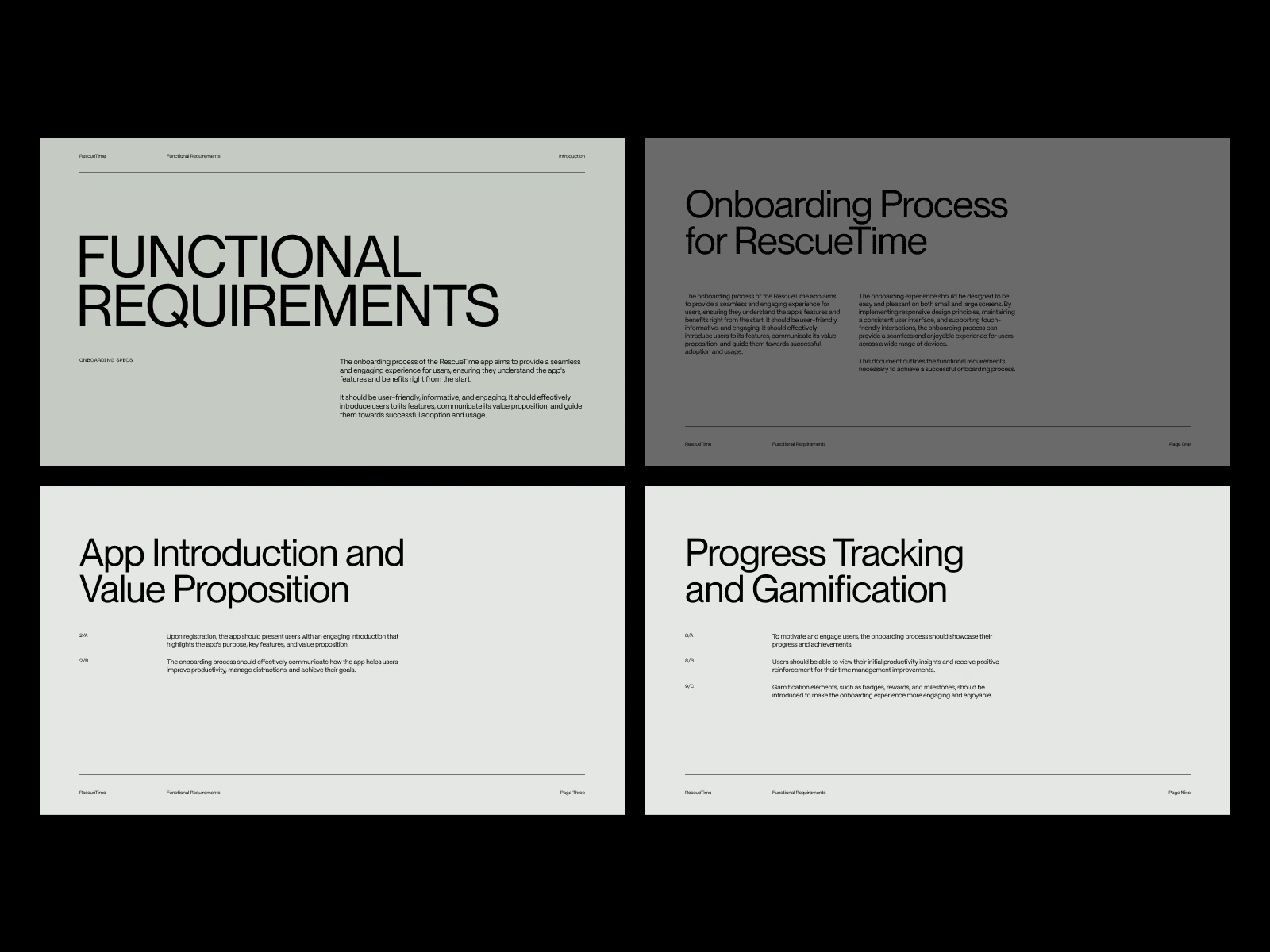
Functional Requirements Document
UX Research and Discovery
The first and most important thing in the design process is to understand the purpose of the product and the people we’re designing it for through research and discovery. By taking the time to delve into the "why" of our project, we can gain a deeper understanding of what our users need and what objectives our product must meet to be successful.
When we define user needs and product objectives and use them as our project foundation, we can create experiences that are not only aesthetically pleasing but also effective, functional, while also meeting the needs of our target audience.
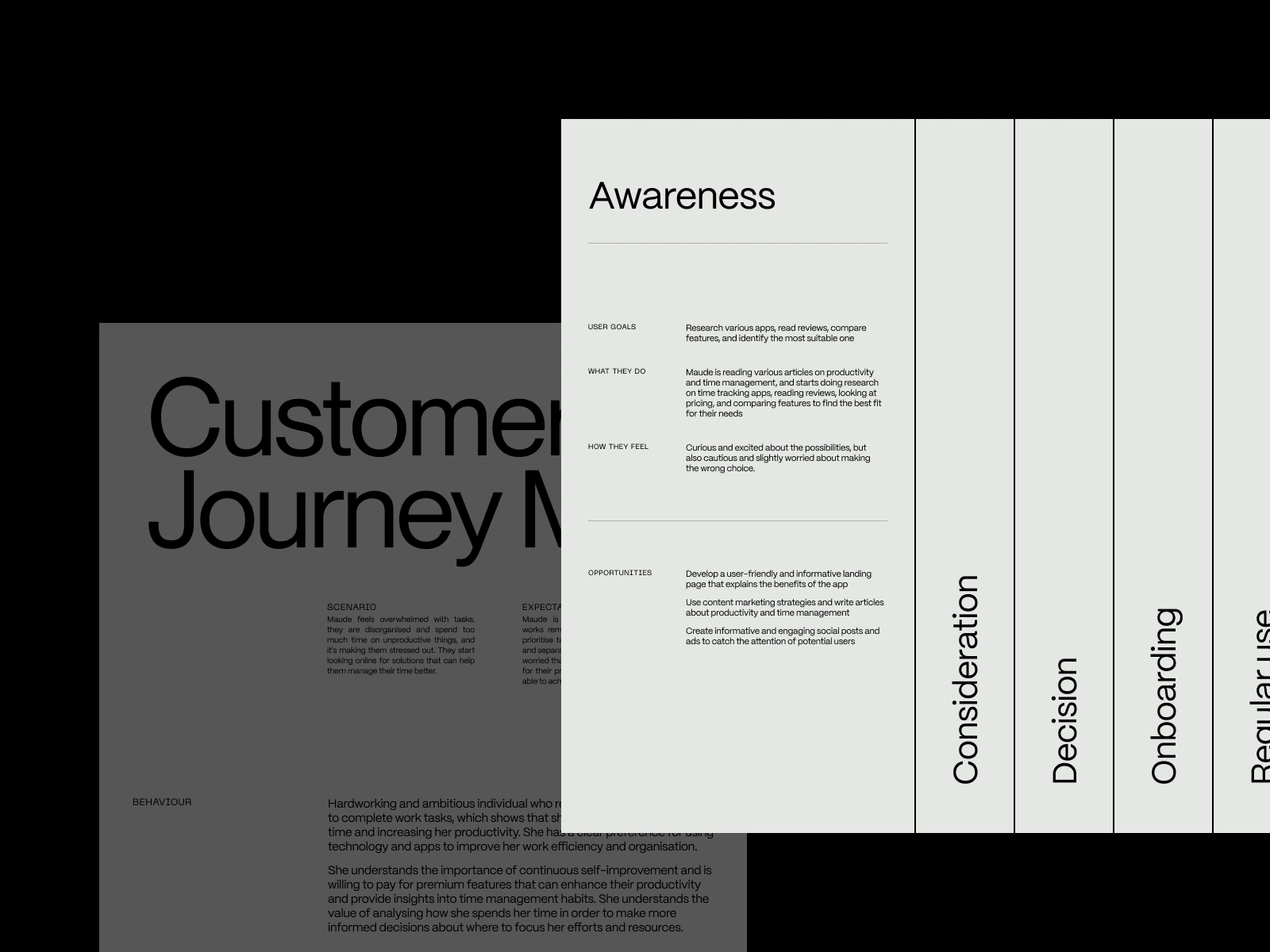
Understanding our Target Audience
Understanding the target audience is crucial to creating meaningful and engaging experiences, and the user persona serves as an indispensable tool, empowering designers to gain a deep and comprehensive understanding of their users.
Personas are fictional representations of key user segments that embody their needs, goals, and behaviors. They act as archetypes, allowing us to empathize with our users and help us make more informed design decisions. We can go beyond a generic understanding of our audience and gain a comprehensive view of their motivations, pain points, and expectations.
We can make an educated assumption based on the nature of the app, the problem it solves, and the segmentation questions from the existing user onboarding process and identify remote workers as our primary target audience.
Potential Benefits of Time Tracking Apps
Let’s think about why would anyone benefit from a time tracking app:
Time Management Challenges – These people often have to manage their time independently and may need tools and strategies to help them prioritize tasks and set goals to stay on track. By visualizing how they spend their time, setting goals, and receiving reminders, they can improve productivity, overcome procrastination, and establish better work habits.
Work-Life Balance – They may struggle to maintain a healthy work-life balance, especially if they work from home. By tracking their time, they can identify patterns of overworking, allocate time for personal activities and self-care, and ensure they are dedicating sufficient time to both work and personal life.
Becoming More Goal-Oriented: Individuals with specific goals, such as learning a new skill or pursuing personal projects, can benefit from time tracking apps. These apps can help them track progress, allocate time towards their goals, and maintain motivation through visual representations of their achievements.
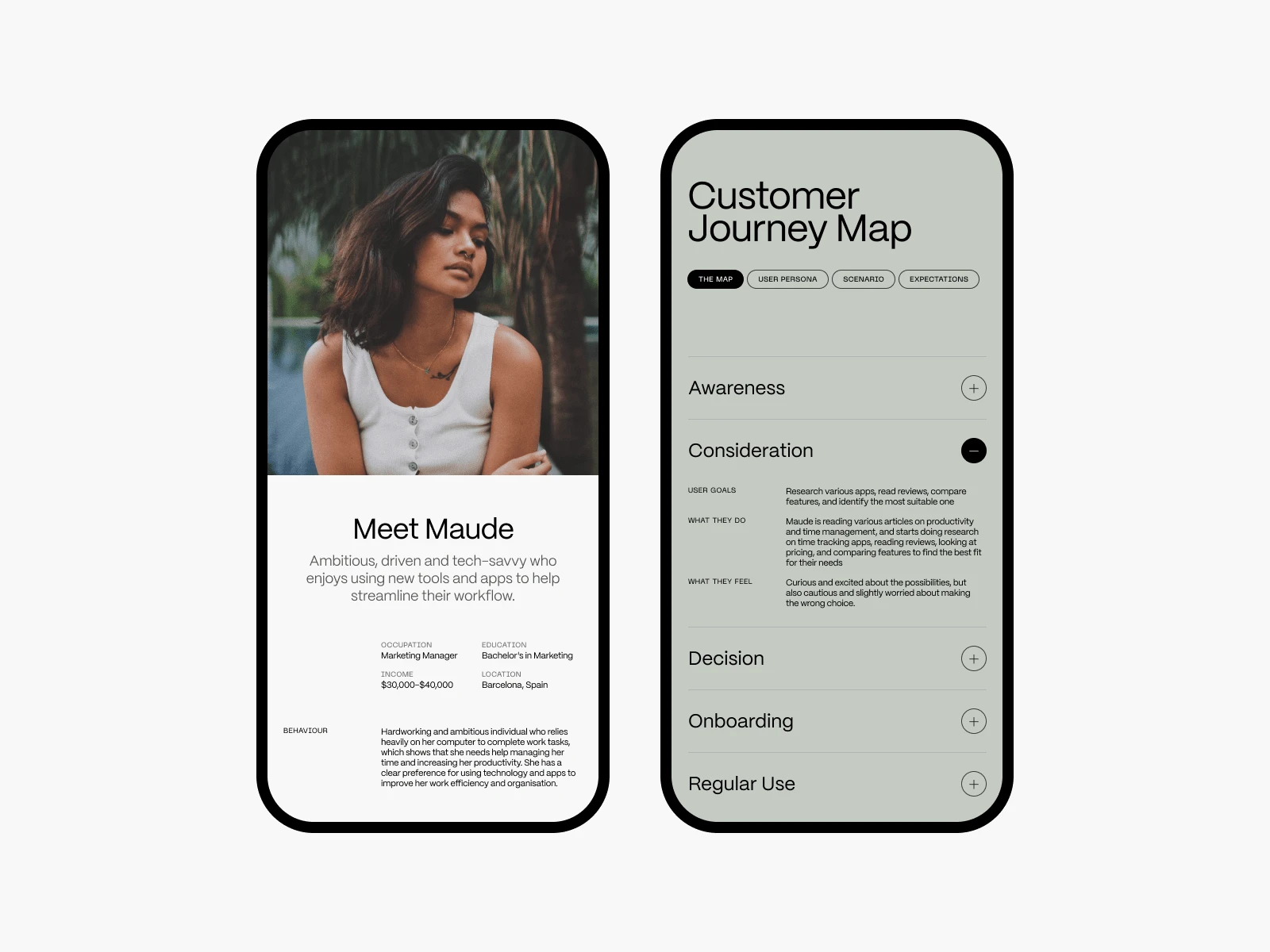
Meet Maude · The Productivity App Persona
Crafting Personas
My favorite way to begin this process is to identify common pain points. This can help create personas that not only resonate with a broad audience, but also highlights specific user needs and goals.
What are the common pain points that the remote workers might have? What unique requirements and specific challenges do they potentially have?
Difficulty Staying Focused: They may find it hard to maintain focus due to distractions at home, such as family members or pets, or the temptation to engage in non-work-related activities
Difficulty Separating Work and Personal Time: They may find it hard to create boundaries between their work and personal life, which could lead to burnout and stress
Inability to Prioritize Tasks Effectively: They may work long hours and have multiple projects to juggle
Inefficient Use of Time: Without the structure of a traditional office environment, they may struggle to manage their time effectively, leading to wasted time and missed deadlines, which could further lead to feeling overwhelmed with tasks and deadlines
Feeling Overwhelmed with Tasks and Deadlines
Feeling Isolated: They may feel isolated due to the lack of accountability that comes from working in remote a team, where you’re not sure how time is being spent
We have already uncovered a few key user pain points. These insights will guide our design decisions and ensure that our solutions align with our users' expectations and aspirations.
Making Personas Feel More Human
In a real-world setting personas would be based on user research, including interviews, surveys, and observations, which provide rich data about users' context, pain points, desires, and habits.
The valuable information behind our persona lies in their motivations, needs, and goals. With this in mind, we can consciously choose to add some irrelevant details like their name, photo, occupation and education to the visual representation, so it looks more relatable and memorable.
In order to keep the project moving faster, I’ll create the demographic, psychographic, and behavioral segmentation details with chatGPT, using prompts that clearly explain who our persona is, what they’re struggling with, and what their desired future state is.
Here’s what I’ve come up with. Meet Maude.

Maude · The Productivity App Persona
The Customer Journey Map
Customer journey maps are an essential tool for gaining a deep understanding of the customer experience and creating a deliverable that everyone on the team can appreciate. By mapping out the journey, we can identify pain points and areas for improvement, and use this information to create an experience that exceeds customers' expectations.
We can track how our customer interacts with our app at every touchpoint and every stage. This allows us to pinpoint where customers may be encountering difficulties or frustrations and iterate accordingly.
Let’s think about the beginning and the end of the journey. What are the before & after states? Before they discover and after they start using the app?
Before: Difficulty staying focused, spending too much time on unproductive tasks, feeling overwhelmed, disorganized and stressed, struggling with boundaries and work-life balance
After: Feeling more productive, less stress and even a sense of accomplishment, being able to prioritize tasks and focus on what matters most, they also have sufficient time and energy for both work and personal life
Our desirable outcome is Maude feeling more productive, in control of their time, and achieving daily goals. On the flip-side, the undesirable outcome would be for Maude to continue feeling overwhelmed, miss deadlines, and not being able to accomplish everything they need to do in a day.
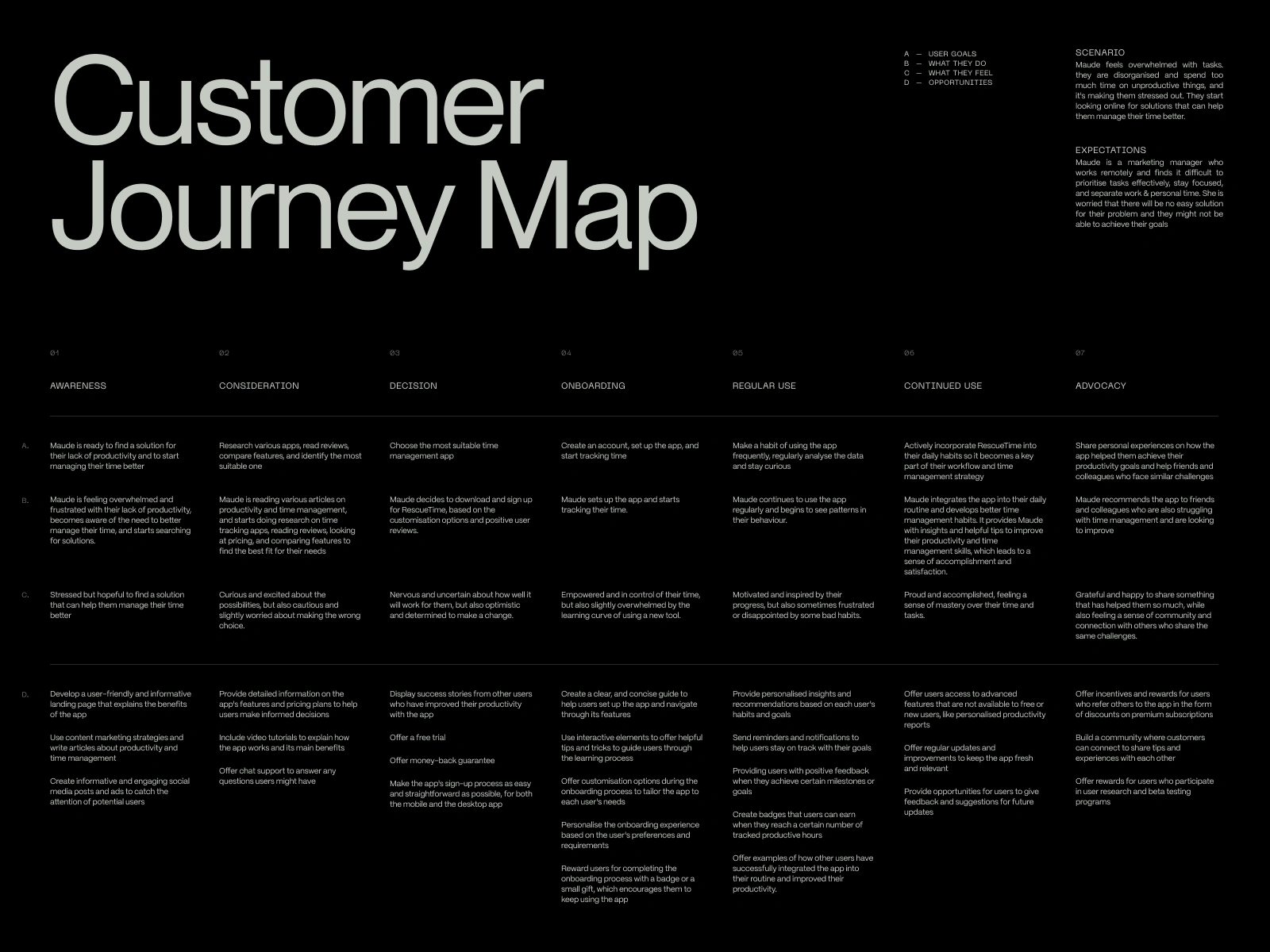
Customer Journey Map · Productivity App
Even though we’re here to enhance the onboarding experience of our product, here I’ve illustrated the entire journey, from the initial discovery to the desired end goal. By mapping out the entire journey, we can identify key touchpoints and interactions, moments of friction that users may encounter during onboarding, and also opportunities to overcome these.
Looking at the customer journey map, we can recognize the significance of the first phases in setting the tone for the overall user experience. It is during these first phases that users form their initial impressions of the product.
Conclusion
The foundation for our design process was laid by thoroughly understanding the product, market, and target audience. Crafting a detailed persona and customer journey map allowed us to step into our users' shoes and uncover some valuable opportunities for improvement.
Stay tuned for the next part of the case study, where we will delve into ideas about how to address the issues and implement the opportunities identified in the Research and Discovery phase, define key onboarding elements, then get into the exciting parts of wireframing, prototyping, and bringing our ideas to life.
Like this project
Posted Jan 15, 2024
This UX Case Study underscores my commitment to user-centered design, translating my research findings into a digital solution that resonates with the end user.
Likes
0
Views
134




